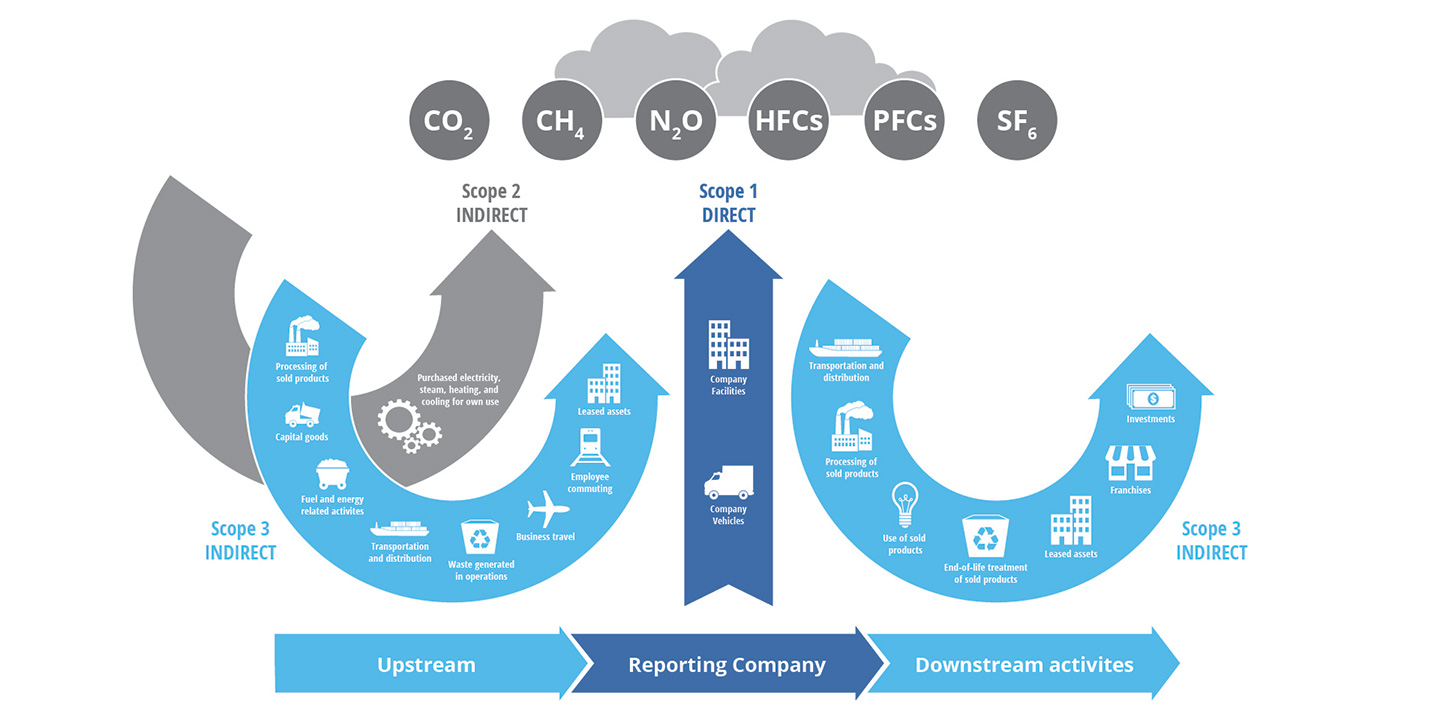As organizations think about their long-term business model, one important aspect they must consider is their risk to climate change. The Biden administration is working towards executive action requiring that public companies measure and disclose their greenhouse gas (GHG) emissions, as one cannot manage that which is not measured. Additionally, the administration is expected to set targets for
net-zero emissions by 2050 and has rejoined the Paris Agreement to work towards climate change milestones by 2030.
Corporate disclosure on climate risk and GHG emissions is expected to become mandatory in the near future. In the meantime, organizations can voluntarily report GHG emissions. Reporting such information is not only a great proactive action to get
ahead of government regulation, it can also improve responsiveness to risk factors and can help communicate to stakeholders that the organization is positioning for long-term financial success. A common resource for climate risk reporting is through
CDP, formerly the Carbon Disclosure Project. CDP provides a framework for organizations of all sizes to assess their GHG emissions and assists them in managing their climate-related risks for the future. This framework outlines three primary actions
for each participating entity.
Steps for Evaluating an Organization’s Emissions
- Identify the source of emissions
When assessing a company-wide emissions portfolio, organizations can look at their emissions in the context of three scopes.
- Scope 1 evaluates an organization’s direct emissions from sources owned or controlled by the organization, such as emissions from fleet vehicles.
- Scope 2 evaluates electricity-related emissions organization-wide.
- Scope 3 evaluates value chain emissions from both upstream and downstream of an organization’s supply chain, for example, emissions from waste generated during operations.
 A visual representation of an organization’s GHG emissions broken out into Scope 1, Scope 2, and Scope 3 emissions. Source GHG Protocol.
A visual representation of an organization’s GHG emissions broken out into Scope 1, Scope 2, and Scope 3 emissions. Source GHG Protocol.
- Collect the data from across the supply chain
After all sources of emissions are identified, it’s important for an organization to evaluate their business model. In addition to the collected data for scopes one through three, this means taking a look at suppliers, how product is transported,
how employees commute, the amount and methods of business travel, and any other processes in place that may contribute to overall GHG emissions beyond the development of their product. With a centralized spreadsheet, this information and data
should be compiled and tracked at regular intervals.
- Report the data
Within the context of the CDP framework, data is reported by sector, such as a rail company reporting in the transportation sector. In addition to CDP climate-related reporting, CDP Forests provides a framework for organizations to report on forest-related
issues and CDP Water provides a framework for organizations to disclose information related to their water management. Some organizations compile their own data, while many choose to outsource this specialty work to a consultant.
The benefits of climate risk reporting go beyond an evaluation of an organization’s GHG emissions. The reporting process also allows organizations to meaningfully evaluate their corporate governance and risk processes.”
Kim Meersma
Making the Business Case
The benefits of climate risk reporting go beyond an evaluation of an organization’s GHG emissions. The reporting process also allows organizations to meaningfully evaluate their corporate governance and risk processes. It allows the organization
to consider how comprehensively they are evaluating and managing financial risks. The process also provides the organization with an opportunity to assess their renewable energy portfolio and to share that information externally and receive recognition
for sustainability efforts. Additionally, the evaluation process demonstrates to shareholders and the general public that the business is committed to sustainability and the long-term success of the organization, which can help attract investors and
improve overall brand image. According to the CDP, 590 investors with over $110 trillion in assets and over 150 large purchasers with over four trillion in procurement
spending are requesting that companies disclose their GHG emissions. By following an environmental reporting framework similar to CDP, many organizations have moved forward with curbing their emissions in line with science-based emissions reduction
targets.